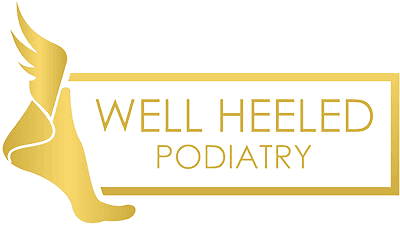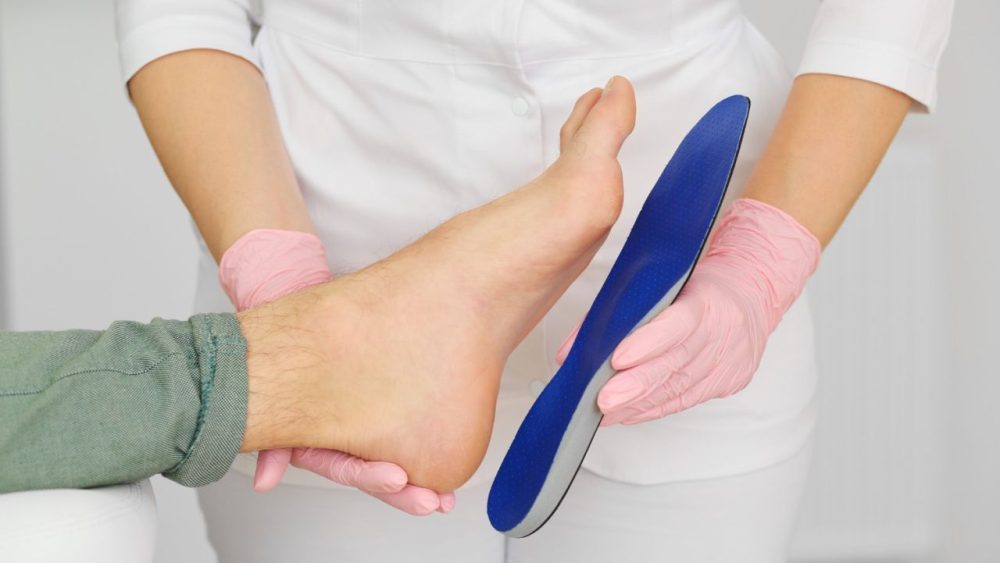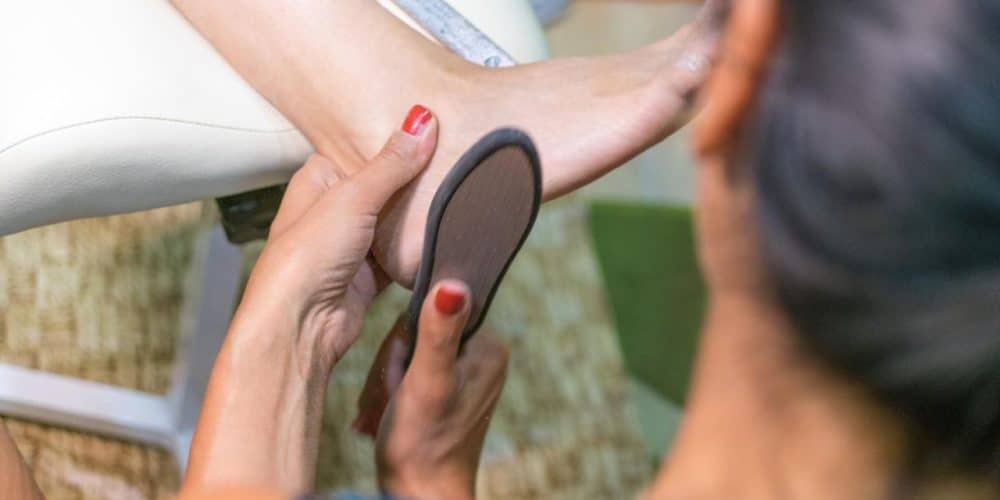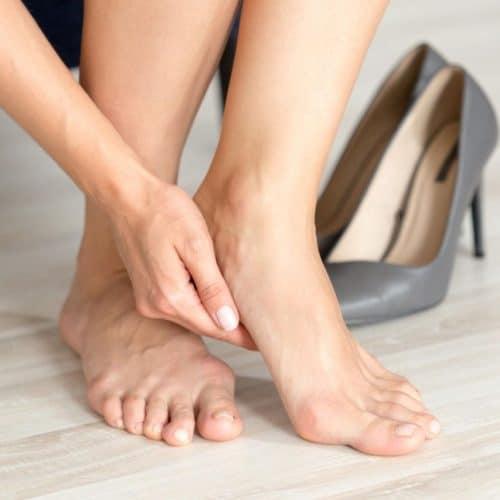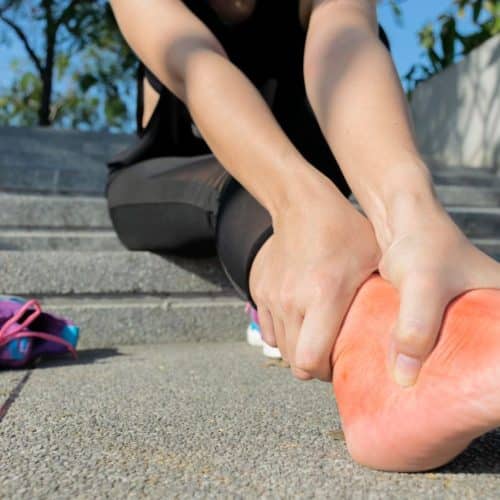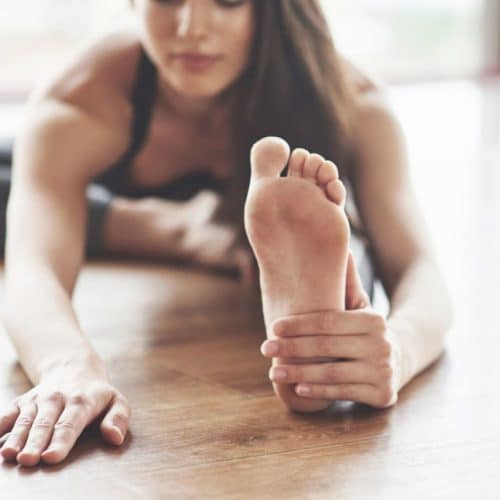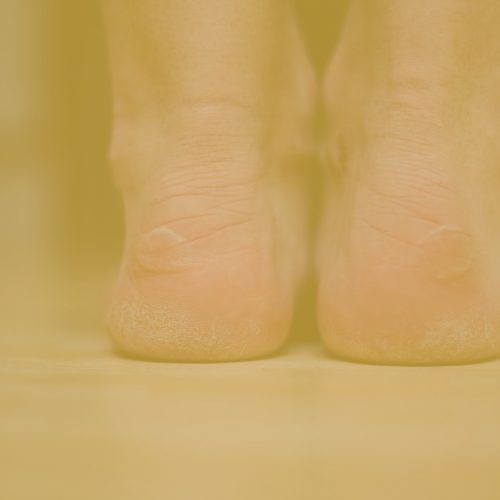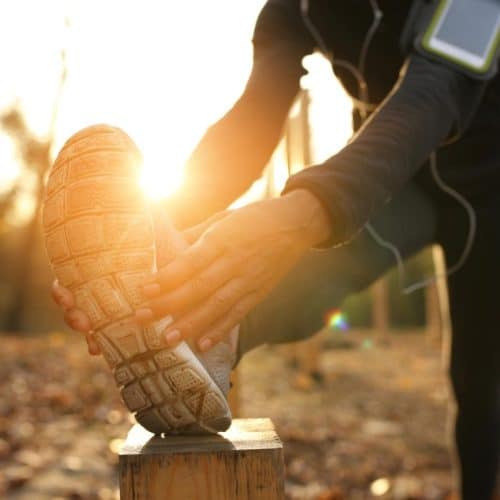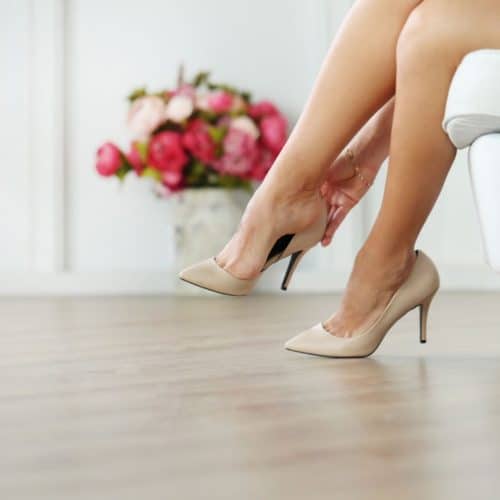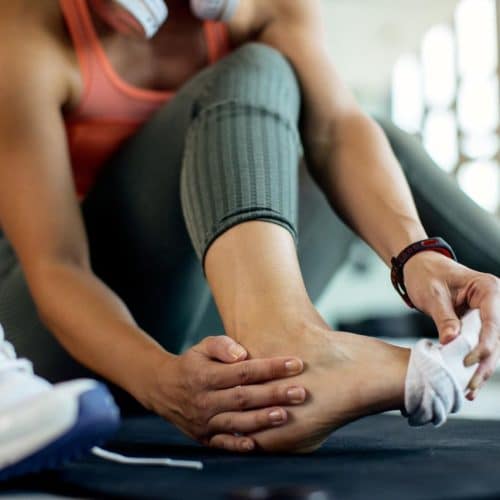Have you ever wondered how our feet, the foundation of our mobility, can have such diverse structures? The Pes Cavus foot stands out with its high arches and unique challenges. How does orthotic management come into play to ensure comfort and stability for those with this foot type?
Understanding Pes Cavus
1. What is Pes Cavus?
Pes Cavus is a foot condition characterised by an unusually high arch on the bottom of the foot. When looking at the foot from the side, the arch is noticeably elevated, giving the foot a distinctive appearance. While a certain degree of arch is normal and helps distribute the body’s weight during walking and running, an excessive arch can lead to biomechanical imbalances and a range of discomforts.
2. Causes of Pes Cavus
The causes of Pes Cavus can be multifaceted. In some cases, the condition is present at birth and is linked to genetics. This is known as congenital Pes Cavus. Individuals with a family history of high arches are more likely to develop this condition. On the other hand, acquired Pes Cavus develops later in life due to various underlying factors.
Neurological conditions can also contribute to the development of Pes Cavus. Conditions such as cerebral palsy or charcot marie tooth, which affects muscle control and movement, can lead to an imbalance in muscle strength around the foot.
This imbalance can cause the foot’s arch to become exaggerated over time. Certain forms of muscular dystrophy and spinal cord injuries can also impact the muscles and nerves responsible for maintaining the arch’s structure.
3. Recognising the Symptoms
Identifying Pes Cavus goes beyond simply observing a high arch. While the visual elevation of the arch is a clear indicator, other symptoms can also manifest. Individuals with Pes Cavus might experience discomfort and pain in the arch area due to excessive pressure on specific foot parts. Over time, this can lead to issues such as calluses, corns, and even ulcers.
Furthermore, the elevated arch can cause instability during walking or standing. This instability increases the risk of ankle sprains and other injuries. Finding properly fitting shoes can also be challenging, as the high arch shape requires specialised footwear to provide adequate support and comfort.
In some cases, individuals with Pes Cavus may notice changes in their gait. The way they walk might be altered due to the biomechanical changes caused by the high arch. This can lead to compensatory movements that affect the knees, hips, and even the lower back, potentially causing pain in these areas.
Understanding the causes and symptoms of Pes Cavus is crucial for its effective management. By addressing the root factors contributing to the condition and providing appropriate support, individuals with high arches can find relief and improve their overall foot health.
Biomechanical Challenges
Individuals with Pes Cavus face a range of biomechanical challenges that stem from the elevated arch of the foot. This unique foot structure can lead to a cascade of effects that affect overall foot function, balance, and even posture. Understanding these challenges is crucial to appreciating the significance of orthotic management in addressing them effectively.
1. Altered Weight Distribution
The higher arch characteristic of Pes Cavus shifts the normal distribution of body weight during standing and walking. As a result, excessive pressure is often exerted on the foot and heel ball. This uneven weight distribution can lead to discomfort, pain, and the formation of calluses or corns on the sole.
2. Limited Shock Absorption
A high-arched foot typically possesses reduced shock-absorbing capabilities compared to a normal arch. The foot’s natural arch helps absorb the impact forces generated during activities like walking or running. With Pes Cavus, the foot’s reduced ability to absorb these shocks can increase the strain on joints, potentially contributing to conditions like arthritis.
3. Instability and Balance Issues
Pes Cavus is associated with reduced surface area in contact with the ground due to the heightened arch. This stability decrease can result in balance challenges, especially during dynamic movements. Individuals with Pes Cavus may experience a higher risk of ankle sprains and falls due to compromised balance.
4. Foot Deformities
In some cases, Pes Cavus can lead to additional foot deformities. Claw toes, where the toes curl downward, and hammertoes, where the toes bend at the middle joint, are common occurrences. These deformities can further exacerbate discomfort and impact overall foot mechanics.
5. Muscle Imbalances
The altered structure of the Pes Cavus foot can contribute to muscle imbalances in the lower extremities. Certain muscles may become overworked to compensate for the uneven weight distribution, while others may need to be more utilised. These imbalances can affect gait patterns and contribute to joint and muscle pain development.
6. Footwear Challenges
Finding appropriate footwear can be a significant challenge for individuals with Pes Cavus. Standard shoes may not provide adequate arch support or cushioning, leading to discomfort during daily activities. Ill-fitting shoes can also exacerbate issues like calluses or blisters due to friction on pressure points.
7. Addressing Biomechanical Challenges with Orthotics
Given the array of biomechanical challenges associated with Pes Cavus, orthotic management becomes a valuable approach to mitigating these issues. Orthotic devices are designed to provide targeted support, cushioning, and correction to counteract the negative effects of a high-arched foot. By addressing weight distribution, enhancing shock absorption, and promoting proper alignment, orthotics play a pivotal role in improving the overall biomechanics of the Pes Cavus foot.
The Role of Orthotics
1. How Orthotics Help
Orthotics serve as valuable allies in managing the challenges presented by Pes Cavus. These custom-made shoe inserts are designed to provide targeted support, cushioning, and foot alignment. Orthotics play a pivotal role in redistributing pressure, enhancing stability, and promoting optimal foot function for individuals dealing with high arches.
These specially crafted inserts are tailored to an individual’s unique foot shape, taking into account the elevated arch and any biomechanical discrepancies that might be present. By doing so, orthotics help achieve a more balanced weight distribution across the foot, preventing excessive pressure on specific areas that can lead to discomfort and complications.
2. Types of Orthotics
When it comes to addressing Pes Cavus, various orthotic options are available. These range from off-the-shelf inserts to custom-made ones. While off-the-shelf options can provide some support, custom orthotics are often recommended for individuals with high arches. This is due to the personalised nature of the condition; each person’s foot structure and needs are unique.
Custom orthotics are crafted based on a comprehensive assessment of the individual’s foot alignment, gait pattern, and specific discomforts. By creating a bespoke solution, podiatrists ensure that the orthotic device precisely addresses the imbalances caused by Pes Cavus, offering tailored support that can make a significant difference in daily comfort and mobility.
Benefits and Considerations
1. Alleviating Pain and Discomfort
The significance of orthotic intervention for individuals with Pes Cavus becomes evident when considering the substantial relief it offers from pain and discomfort. The elevated arch characteristic of this condition can lead to concentrated pressure on specific areas of the foot, resulting in discomfort that ranges from mild to debilitating. This discomfort can extend to the knees, hips, and lower back due to altered biomechanics.
Orthotics play a transformative role by re-distributing the weight more evenly across the entire foot. By doing so, they effectively alleviate the excessive pressure on certain points, reducing pain and discomfort. Individuals who have struggled with persistent foot pain find that orthotics provide a renewed sense of comfort, allowing them to walk, stand, and engage in activities with greater ease.
2. Enhancing Stability
Stability is paramount for fluid and secure movement. Pes Cavus can compromise stability due to the imbalance caused by the high arch. This imbalance can lead to an increased risk of falls, especially during activities that involve changes in direction or uneven surfaces.
Orthotics step in as stabilising champions. By providing necessary support to the arch and surrounding structures, they create a solid foundation for the foot. This enhanced stability prevents wobbling and empowers individuals to walk and move more confidently. Engaging in physical activities becomes less daunting, and the fear of losing balance significantly diminishes.
3. Finding the Right Fit
Selecting the right type of orthotics is a crucial step on the path to effective management of Pes Cavus. While off-the-shelf options are available, custom-made orthotics are often the preferred choice. Custom orthotics are meticulously designed to accommodate each individual’s unique foot structure, gait pattern, and specific discomforts.
When considering orthotics, consulting a podiatrist or a healthcare practitioner specialising in foot conditions is imperative. These experts thoroughly assess the arch’s height and any other factors contributing to discomfort. This assessment guides the creation of orthotics tailored to address the specific challenges Pes Cavus poses.
Moreover, the process continues after acquiring orthotics. Regular follow-ups with the podiatrist are essential to ensure that the orthotics are delivering the expected benefits and making any necessary adjustments if needed.
Orthotic Management Approaches
Orthotic management for individuals with Pes Cavus involves a tailored approach that addresses the specific biomechanical challenges posed by the condition. These custom interventions provide support, alignment correction, and enhanced functionality to improve those affected’s overall quality of life. Let’s delve into the various aspects of orthotic management for Pes Cavus:
1. Comprehensive Assessment
Orthotic management begins with a comprehensive assessment by a qualified podiatrist or orthopedic specialist. This assessment involves analysing the individual’s foot structure, gait patterns, and any existing issues or discomfort. Understanding the individual’s unique needs is crucial to designing effective orthotic solutions.
2. Customised Orthotic Design
Unlike generic shoe inserts, orthotics for Pes Cavus are meticulously customised to each individual. The design process considers the individual’s arch height, weight distribution, and any deformities or imbalances present. This personalised approach ensures that the orthotic device provides optimal support and correction.
3. Arch Support Variations
Orthotics for Pes Cavus often incorporate varying degrees of arch support, depending on the severity of the condition. The goal is to gradually reduce the excessive arch height and redistribute weight evenly across the foot. The arch support also helps alleviate the metatarsal heads and heel strain, promoting more natural foot mechanics.
4. Accommodation of Foot Deformities
Individuals with Pes Cavus may exhibit foot deformities such as claw toes or hammertoes. Orthotic devices can be designed with features that accommodate these deformities, providing cushioning and support to prevent friction and pressure points.
5. Combination of Materials
Orthotics are constructed using a combination of materials that cater to different needs. Soft materials offer cushioning in high-pressure areas, while firmer materials provide stability and control. The selection of materials depends on the individual’s requirements and the desired outcomes.
6. Heel Stabilisation Features
Given Pes Cavus’s instability, orthotic devices may include heel stabilisation features. These features enhance support around the heel, reducing the risk of ankle rolling or sprains. Heel stabilisation also contributes to improved overall balance.
7. Shock Absorption Enhancement
Many orthotic designs incorporate shock-absorbing materials to counteract the reduced shock-absorption capabilities of the high-arched foot. This feature minimises the impact forces transmitted through the foot during activities like walking, jogging, or jumping.
8. Regular Follow-Up
Orthotic management is an ongoing process that requires periodic follow-up appointments. These appointments allow the podiatrist to assess the effectiveness of the orthotics, make necessary adjustments, and address any emerging issues.
Orthotic management for Pes Cavus empowers individuals to embrace improved foot functionality and a better quality of life. By addressing the specific challenges posed by the condition, orthotics play a pivotal role in reducing pain, enhancing mobility, and preventing further complications. The personalised approach to orthotic design ensures that each individual receives tailored support to navigate daily activities comfortably and confidently.
Taking Steps Towards Comfort
1. Orthotic Adaptation Period
When embarking on the journey of orthotic intervention, it’s important to be mindful of the adaptation period. Just like breaking in a new pair of shoes, your feet need time to adjust to the presence of orthotics. During the initial days of wearing orthotics, you might experience discomfort or unusual sensations. This is completely normal and is often a result of your feet adapting to the new support and alignment.
It’s recommended to increase the time you wear your orthotics gradually. Start by wearing them for short periods and gradually extend the duration as your feet become accustomed. During this period, your feet are getting reacquainted with proper alignment and support, ultimately contributing to better foot health. Remember, the initial discomfort is a temporary phase that paves the way for long-term benefits.
2. Footwear Matters
Pairing your orthotics with appropriate footwear is a crucial aspect of the comfort equation. The right shoes not only enhance the effectiveness of the orthotics but also contribute to your overall comfort and mobility. When selecting shoes to accommodate orthotic inserts, consider the following:
- Ample Space: Opt for shoes with sufficient room to accommodate the orthotic inserts comfortably. A snug fit might compromise the benefits of the orthotics.
- Arch Support: Look for shoes that offer built-in arch support in addition to your orthotics. This complementary support enhances the overall comfort and stability.
- Depth and Width: Choose shoes with adequate depth and width to accommodate your feet and the orthotics without feeling cramped.
- Lacing or Straps: Shoes with laces or adjustable straps allow you to customise the fit, ensuring that your feet and orthotics are securely held.
- Activity-specific Shoes: Different activities demand different types of shoes. Ensure you have the right footwear for specific activities, whether walking, running or casual wear.
Investing in high-quality, supportive footwear enhances the performance of your orthotics and contributes to your overall foot health and comfort.
Conclusion
In conclusion, the orthotic management of the pes cavus foot is a crucial aspect of addressing the challenges posed by this condition. By understanding the unique biomechanical issues associated with high arches, individuals can benefit greatly from using custom orthotic solutions.
These orthotics play a pivotal role in enhancing stability, reducing discomfort, and preventing the development of secondary complications. Moreover, the advancements in orthotic technology have made it possible to create personalised orthotic devices that cater to each patient’s specific needs.
Individuals with pes cavus foot can experience improved quality of life and increased mobility with a tailored approach to orthotic management. Whether through arch supports, cushioning insoles, or specialised footwear, orthotics provide the much-needed support to alleviate pain and enhance overall foot function.
Are you ready to take the first step towards comfortable and pain-free mobility? How do you envision orthotic management improving your daily activities and overall well-being? Share your thoughts below and take charge of your foot health journey!
Content Summary
- The Pes Cavus foot stands out with its high arches and unique challenges.
- You’ll discover how custom-made shoe inserts, braces, and specialised footwear can make a difference in alleviating discomfort and enhancing daily functionality for individuals with Pes Cavus.
- Don’t let Pes Cavus foot hold you back any longer; let’s step into a world of enhanced comfort and mobility together.
- Pes Cavus is a foot condition characterised by an unusually high arch on the bottom of the foot.
- The causes of Pes Cavus can be multifaceted.
- Individuals with a family history of high arches are more likely to develop this condition.
- Identifying Pes Cavus goes beyond simply observing a high arch.
- While the visual elevation of the arch is a clear indicator, other symptoms can also manifest.
- Individuals with Pes Cavus might experience discomfort and pain in the arch area due to excessive pressure on specific foot parts.
- Over time, this can lead to issues such as calluses, corns, and even ulcers.
- Furthermore, the elevated arch can cause instability during walking or standing.
- In some cases, individuals with Pes Cavus may notice changes in their gait.
- The way they walk might be altered due to the biomechanical changes caused by the high arch.
- Understanding the causes and symptoms of Pes Cavus is crucial for its effective management.
- By addressing the root factors contributing to the condition and providing appropriate support, individuals with high arches can find relief and improve their overall foot health.
- Individuals with Pes Cavus face a range of biomechanical challenges that stem from the elevated arch of the foot.
- This unique foot structure can lead to a cascade of effects that affect overall foot function, balance, and even posture.
- Understanding these challenges is crucial to appreciating the significance of orthotic management in addressing them effectively.
- The higher arch characteristic of Pes Cavus shifts the normal distribution of body weight during standing and walking.
- Pes Cavus is associated with reduced surface area in contact with the ground due to the heightened arch.
- This stability decrease can result in balance challenges, especially during dynamic movements.
- Individuals with Pes Cavus may experience a higher risk of ankle sprains and falls due to compromised balance.
- In some cases, Pes Cavus can lead to additional foot deformities.
- The altered structure of the Pes Cavus foot can contribute to muscle imbalances in the lower extremities.
- Finding appropriate footwear can be a significant challenge for individuals with Pes Cavus.
- Given the array of biomechanical challenges associated with Pes Cavus, orthotic management becomes a valuable approach to mitigating these issues.
- By addressing weight distribution, enhancing shock absorption, and promoting proper alignment, orthotics play a pivotal role in improving the overall biomechanics of the Pes Cavus foot.
- Orthotics serve as valuable allies in managing the challenges presented by Pes Cavus.
- Orthotics are pivotal in redistributing pressure, enhancing stability, and promoting optimal foot function for individuals with high arches.
- When it comes to addressing Pes Cavus, various orthotic options are available.
- These range from off-the-shelf inserts to custom-made ones.
- While off-the-shelf options can provide some support, custom orthotics are often recommended for individuals with high arches.
- The significance of orthotic intervention for individuals with Pes Cavus becomes evident when considering the substantial relief it offers from pain and discomfort.
- The elevated arch characteristic of this condition can lead to concentrated pressure on specific areas of the foot, resulting in discomfort that ranges from mild to debilitating.
- By doing so, they effectively alleviate the excessive pressure on certain points, reducing pain and discomfort.
- Individuals who have struggled with persistent foot pain find that orthotics provide a renewed sense of comfort, allowing them to walk, stand, and engage in activities with greater ease.
- Stability is paramount for fluid and secure movement.
- Pes Cavus can compromise stability due to the imbalance caused by the high arch.
- Orthotics step in as stabilising champions.
- By providing necessary support to the arch and surrounding structures, they create a solid foundation for the foot.
- Engaging in physical activities becomes less daunting, and the fear of losing balance significantly diminishes.
- When considering orthotics, consulting a podiatrist or a healthcare practitioner specialising in foot conditions is imperative.
- This assessment guides the creation of orthotics tailored to address the specific challenges Pes Cavus poses.
- Orthotic management for individuals with Pes Cavus involves a tailored approach that addresses the specific biomechanical challenges posed by the condition.
- Orthotic management begins with a comprehensive assessment by a qualified podiatrist or orthopedic specialist.
- This assessment involves analysing the individual’s foot structure, gait patterns, and any existing issues or discomfort.
- Understanding the individual’s unique needs is crucial to designing effective orthotic solutions.
- Unlike generic shoe inserts, orthotics for Pes Cavus are meticulously customised to each individual.
- The design process considers the individual’s arch height, weight distribution, and any deformities or imbalances present.
- This personalised approach ensures that the orthotic device provides optimal support and correction.
- Orthotics for Pes Cavus often incorporate varying degrees of arch support, depending on the severity of the condition.
- Orthotic devices can be designed with features that accommodate these deformities, providing cushioning and support to prevent friction and pressure points.
- Many orthotic designs incorporate shock-absorbing materials to counteract the reduced shock-absorption capabilities of the high-arched foot.
- Orthotic management is an ongoing process that requires periodic follow-up appointments.
- Orthotic management for Pes Cavus empowers individuals to embrace improved foot functionality and a better quality of life.
- By addressing the specific challenges posed by the condition, orthotics play a pivotal role in reducing pain, enhancing mobility, and preventing further complications.
- When embarking on the journey of orthotic intervention, it’s important to be mindful of the adaptation period.
- Just like breaking in a new pair of shoes, your feet need time to adjust to the presence of orthotics.
- This is completely normal and is often a result of your feet adapting to the new support and alignment.
- It’s recommended to increase the time you wear your orthotics gradually.
- Pairing your orthotics with appropriate footwear is a crucial aspect of the comfort equation.
- The right shoes not only enhance the effectiveness of the orthotics but also contribute to your overall comfort and mobility.
- Activity-specific Shoes: Different activities demand different types of shoes.
- Ensure you have the right footwear for specific activities, whether walking, running or casual wear.
- Investing in high-quality, supportive footwear enhances the performance of your orthotics and contributes to your overall foot health and comfort.
- In conclusion, the orthotic management of the pes cavus foot is a crucial aspect of addressing the challenges posed by this condition.
- By understanding the unique biomechanical issues associated with high arches, individuals can benefit greatly from using custom orthotic solutions.
- These orthotics play a pivotal role in enhancing stability, reducing discomfort, and preventing the development of secondary complications.
- Moreover, the advancements in orthotic technology have made it possible to create personalised orthotic devices that cater to each patient’s specific needs.
- Individuals with pes cavus foot can experience improved quality of life and increased mobility with a tailored approach to orthotic management.
- Whether through arch supports, cushioning insoles, or specialised footwear, orthotics provide the much-needed support to alleviate pain and enhance overall foot function.
FAQs
1. Are orthotics only for people with foot pain?
No, orthotics can also benefit individuals with foot deformities like Pes Cavus to improve stability and prevent discomfort.
2. How long does it take to get used to wearing orthotics?
The adaptation period varies, but most individuals get used to orthotics within a few weeks.
3. Can I buy orthotic inserts from a store?
While off-the-shelf orthotics are available, custom-made ones are more suitable for addressing specific conditions like Pes Cavus.
4. Do orthotics need to be worn all the time?
Your podiatrist will guide how often to wear orthotics based on your needs.
5. Where can I find more information about orthotic management?
For detailed information, consult a podiatrist or a healthcare practitioner specialising in foot conditions.

